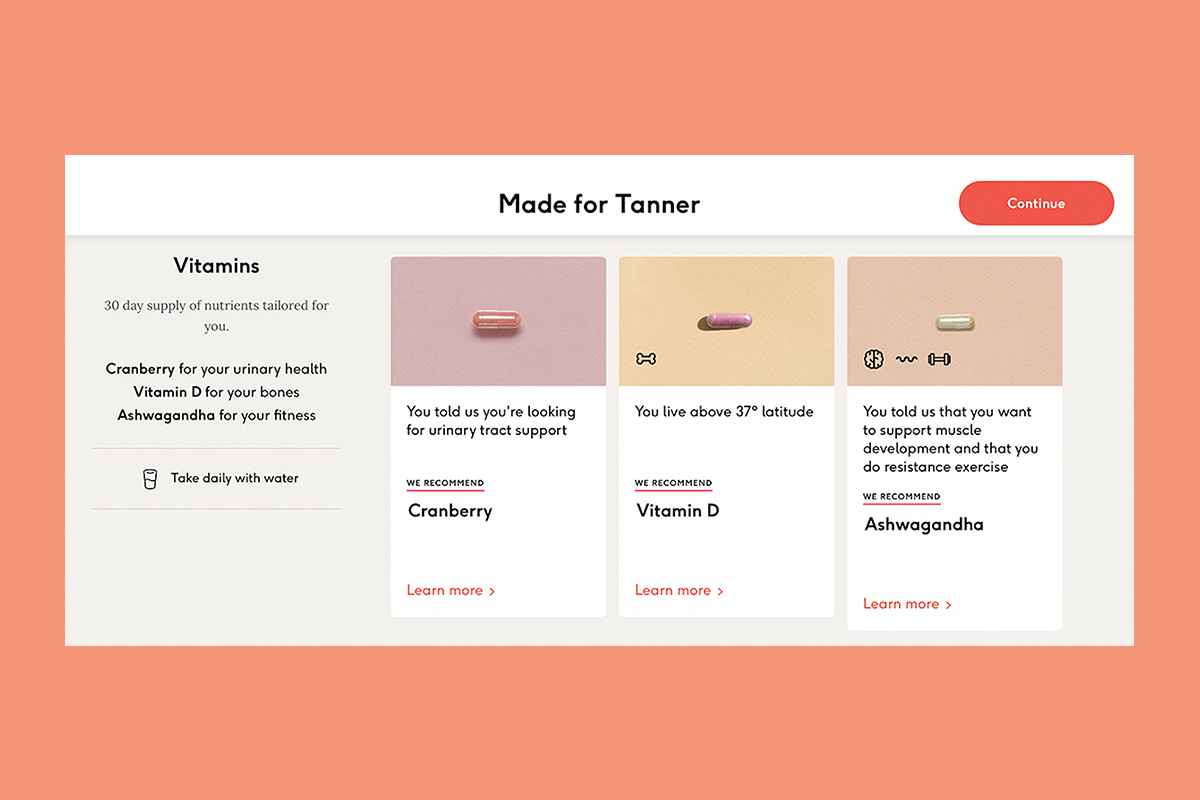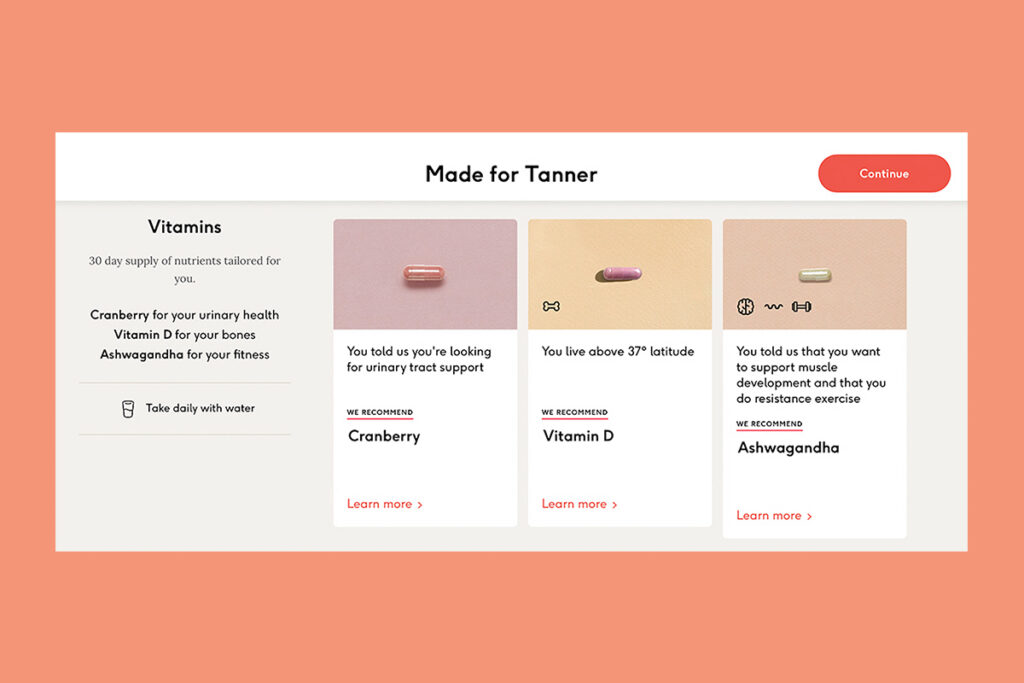Women live longer than men. It’s true. On average, American women’s life expectancy exceeds that of their male counterparts by five years. And across the world, 67% of people over the age of 85 are women. There are anthropological reasons for this (men are more likely to have dangerous jobs like fighting fires, or have dangerous hobbies like owning a motor bike) and biological reasons (in the animal kingdom, larger mammals generally have shorter life spans). But one compelling reason for the discrepancy is a gendered “nutrient gap.”
For the last 20 years, numerous studies have exhibited that women eat a healthier diet than men. In one Massachusetts survey, women were 50% more likely than men to eat at least five servings of fruit and vegetables a day. The CDC reached a similar conclusion after analyzing data from something called the Behavioral Risk Factor Surveillance System in 2017. And the American Society for Microbiology has exhibited that men are more likely to report eating meat and poultry items while women are more likely to report eating fruits and vegetables.
In fairness, American men and women are both involved in another sort of nutrient gap: the difference between the nutrients we need and those we decide to consume instead. And it’s more gorge than gap. Since the 1960s, when the National Health and Nutrition Examination Survey began collecting information on the country’s dietary trends, Americans have consistently and overwhelmingly failed to meet Estimated Average Requirements (EARs) for minerals and vitamins like vitamin D, fiber, potassium, magnesium, calcium and omega-3 fatty acids.
The unofficial national solution: spend money on multivitamins. We fork over somewhere in the ballpark of $35 billion every year for capsules, powders and gummies in an attempt to short-circuit our bodies into thinking that we’re eating healthily. It’s not just a few Americans, either. It’s a strong majority, at 75%, spending that money. That figure would fit in the percentage brackets of most nutritional deficiencies — in the NHANES studies, 50-90% of Americans are missing out on important vitamins — suggesting that most people are indeed willing to pay their way to better overall health.
But they seem unwilling to spend that money on healthier plates. Consider a couple telling quotes from New York Times bestselling author and general food whisperer Michael Pollan: “For the majority of Americans, spending more for better food is less a matter of ability than priority.” He also says: “Eat food. Not too much. Mostly plants.” It’s become customary to fund subscriptions for three or four different streaming services, yet stalks of asparagus are seen as too pricey. We buy something starchy or salty instead, then chew on a tablet to fill in the holes in our diet. It’s a cycle of convenience that subsists on delusion.
Consider, for instance, the response when The Washington Post spoke to officials from the National Center for Complementary and Integrative Health along with the National Institutes of Health earlier this year. When asked the question “Which dietary supplements actually have well-established benefits?”, not a single scientist (without ties to the supplement industry, at least) was willing to classify the health claims made on dietary supplements as “meaningful.” If that sounds damning to you, it’s because it is. But at the same time, it’s nothing new.

My personal plan from Ritual
Care/of
Our attention spans tend to get selective when confronted with hard data on multivitamins. Despite evidence that, for the majority of the population, there is little benefit to taking multivitamins, we have continued to do so, almost nonstop since the 1980s. Use of “natural remedies” skyrocketed during the 1990s and held steady (against all shortchanged reason) amid the Great Recession. The popularity has continued even into the 2020s, as many multivitamin brands continue to feature dubious ingredients or distort their efficacy.
A ConsumerLab review posted this spring found that 12 of the 27 most common multivitamins on the market are misrepresenting their nutrient levels. Not to mention: gummies have been outed as additive-filled sugar beans (no wonder they taste like candy), and fish oils, a $1 billion business in their own right, are no longer considered a defense against heart disease. They’ve even been linked to prostate cancer.
Where does one go from here? Probably not to GNC. The pharmacy that started it all is reeling from the worst year in retail memory, and filed for bankruptcy in late June. It wasn’t in great shape before the pandemic — as early as 2016, the behemoth carried $1.6 in funded debt — but an inability to achieve “essential” status during the early lockdown period signaled its death knell. In its place (and conspicuously minimalist compared to GNC’s over-stocked, grocery store-style aisles) are a variety of focused “telehealth” companies eager to use their youth, agility and online savvy to carve out a place in the health industry. Some, like hims and Ro, have highly specific goals: reverse hair loss, prevent erectile dysfunction, curb obesity, help people quit smoking, etc.
Others, like Care/of and Ritual, have set out to reimagine the multivitamin space. Care/of recommends a “personalized daily vitamin pack,” following an intensive quiz on your fitness level, sleeping habits, and nutritional goals. As you can see above, I was “prescribed” tablets for cranberry powder, vitamin D and ashwagandha, an Indian herb that’s supposed to relieve stress and increase energy levels. Ritual makes a single daily tablet for a variety of cohorts: Men 18-49, Men 50+ and Boys 13-17, and Women 18-49, Women 50+, Prenatal Women and Girls 13-17. Each pill is slightly different to account for the different needs of those taking it, and Ritual likes to highlight each nutrient’s place of origin, similar to how a DTC boot company will write about its fair-trade factory in northern Italy in the About section of its web shop.
In the Men 18-49 pill, for instance, the magnesium is from Ogden, Utah, the vitamin K2 is from Oslo, and the vitamin E is from Buenos Aires. That’s an unheard-of level of candor for a company in the dietary supplement industry. And those thoughtful touches extend to the capsule’s delayed-release mechanism (it dissolves in a less sensitive area of the gut), a “mint tab” that keeps the bottle from smelling like a horse stable, and a forward design that packs up to 12 nutrients in one capsule. I’ve tried Ritual, and aesthetically, it’s an impressive departure from GNC’s clunky approach (which has steadily morphed into Amazon’s clunky approach).
But even if Ritual has perfected the daily dietary supplement, it’s important to remember that we don’t all need a daily dietary supplement. Yes, most of us need to get more vitamins and minerals into our bodies, but simply relying on a capsule to make up that nutrient gap — as opposed to reassessing how we spend money, and what we put on our plates — maybe isn’t the best way forward, no matter how beautiful the packaging is. Speaking to The New York Times in 2018, Dr. Brent Bauer, the director of a prominent Mayo Clinic in Minnesota, said: “I’m not averse to the use of dietary supplements and use them in my practice routinely, but they’re never the first answer … As soon as you say your product is good for everybody, it’s hard for me to see the science.”
The Chief Medical Editor of Harvard Health Publishing, Dr. Howard LeWine, echoed those comments in an article this April, writing, “How food, and its component molecules, affect the body is largely a mystery. That makes the use of supplements for anything other than treating a deficiency questionable.” In a so-called era of “personalized nutrition,” it’s important to remember exactly who you are. If you’re an older adult, vegan or prenatal, there are micronutrient deficiencies you can’t solve with a more thoughtful dinner plate.
All credit to emerging companies with big dreams, but just because you’re a man aged 18-49 doesn’t mean you should take a pill named Men 18-49. Ritual, to its credit, has acknowledged that in a perfect world, there would be no multivitamins. And Care/of, at least, recommends nutrients with specific endgames, instead of anointing a catch-all silver bullet. But if you’re a man prioritizing meat, poultry and eggs over everything else (which would make you a pretty average American man), even the best telehealth innovations can’t mop up a greasy diet.
The best shot for American men to close their multiple nutrient gaps — as men, as Americans — is oddly more straightforward than all the “solutions” they spend hours researching, or see in Instagram ads twice a week. Just get fruits and vegetables into your diet. They don’t cost as much as you remember. Don’t go a day without walking. Start exercising every day. Unlike Ritual, daily rituals aren’t sexy. But they’ll set you on the right path regardless.
Subscribe here for our free daily newsletter





